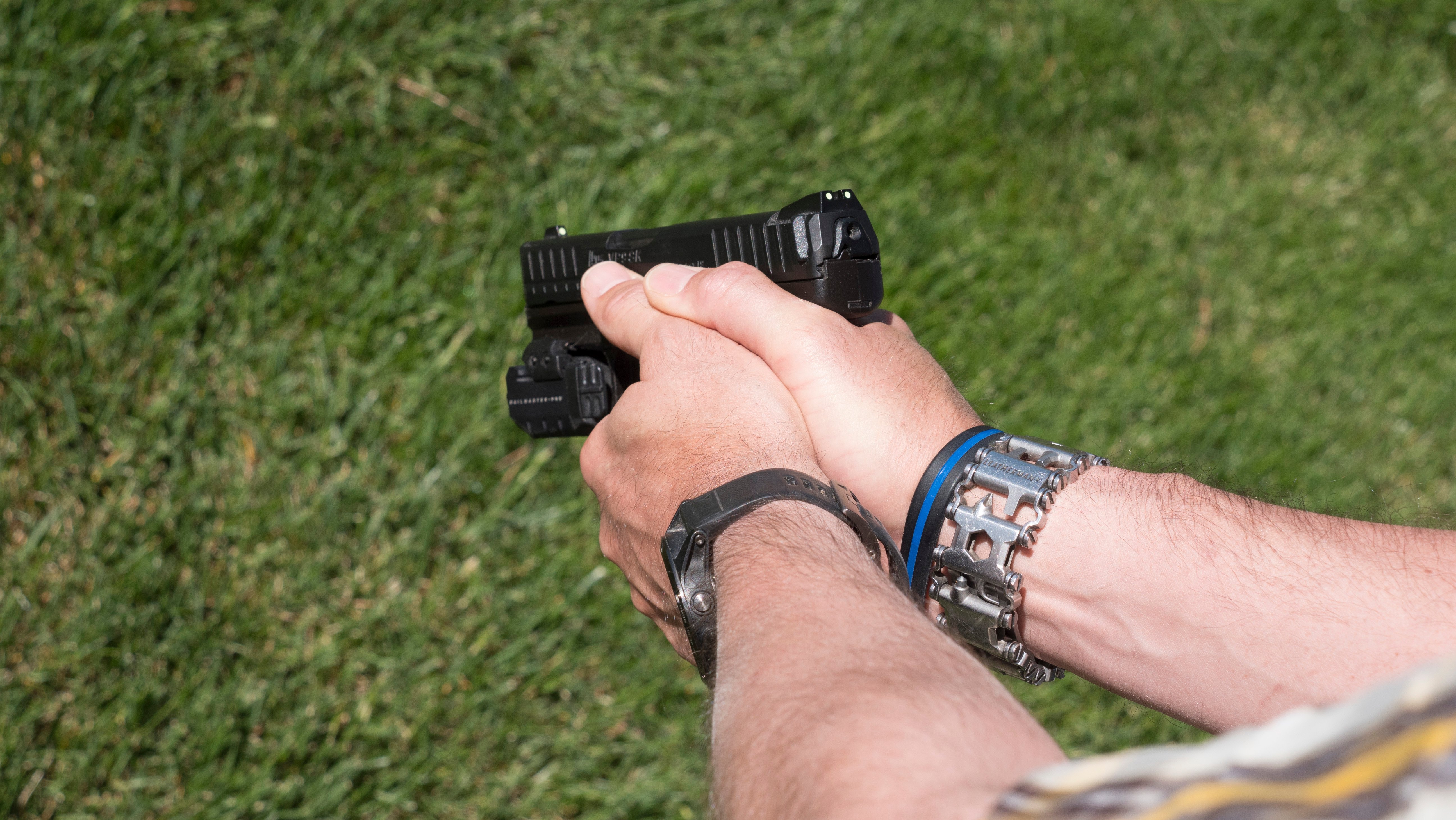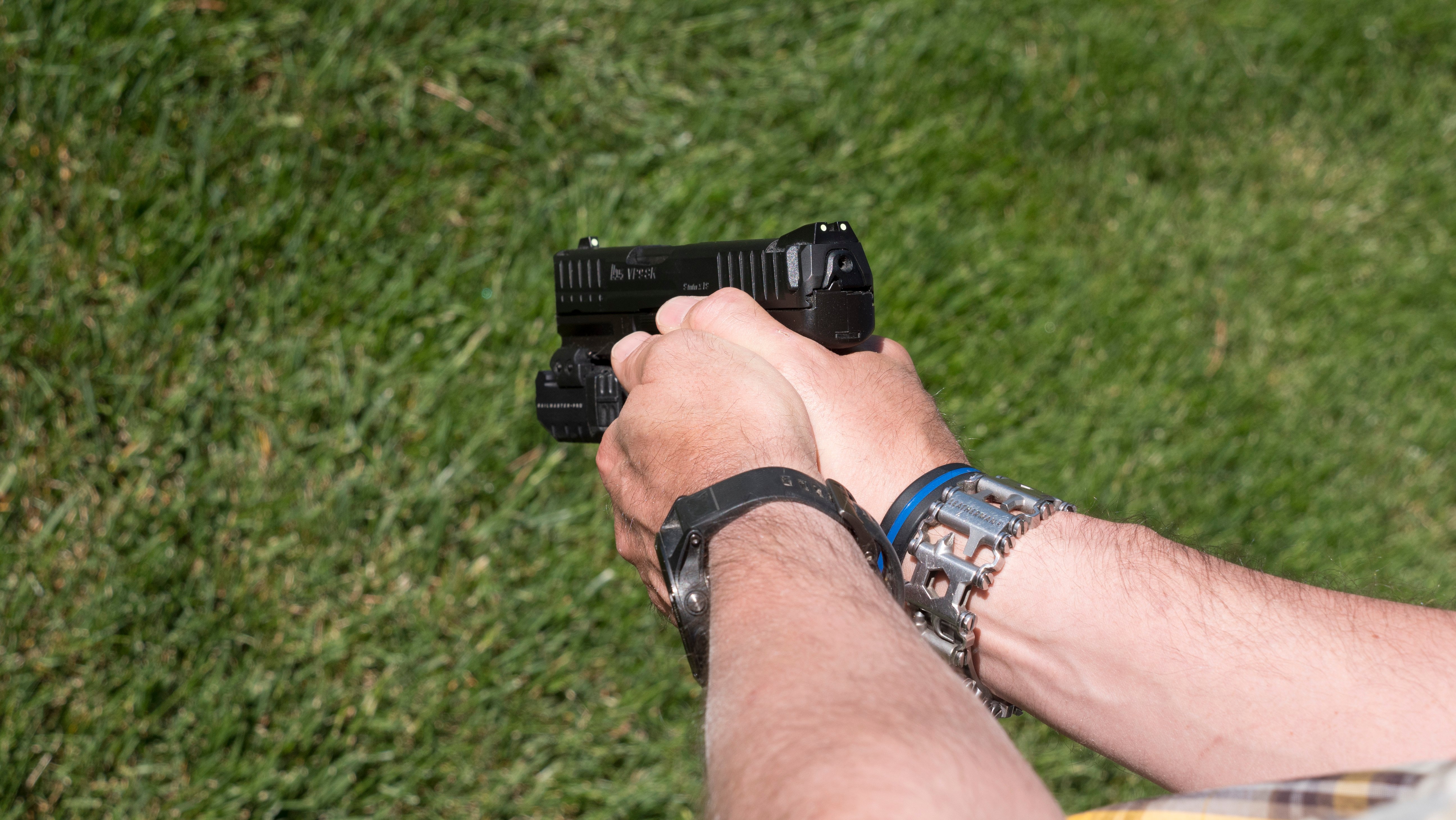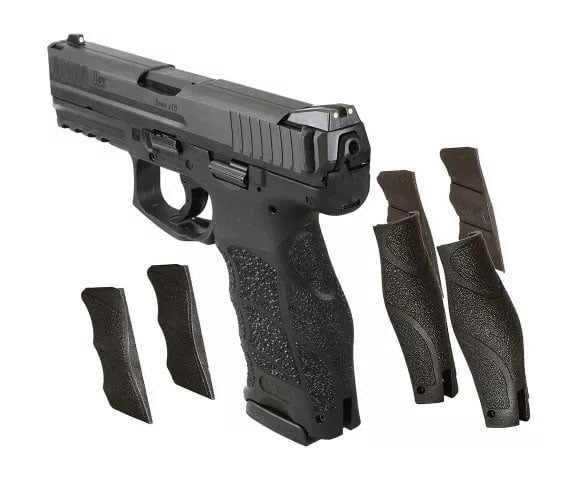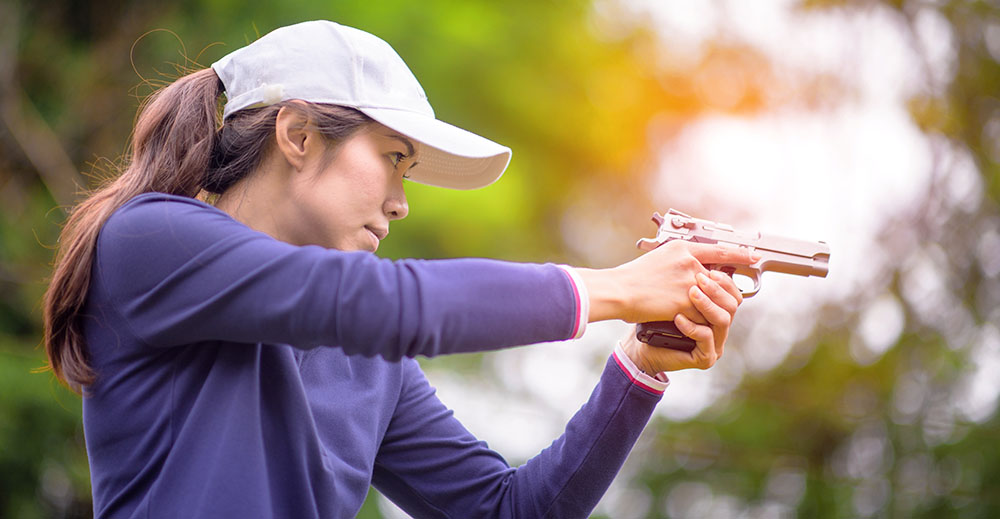How to Select a Concealed Carry Gun
By Dan Kidder |
Selecting a concealed carry pistol that works for you isn’t that complicated, but it does require understanding certain concepts such as fit, ease of use, comfort, capability, and price. As a firearms instructor with nearly 30 years of experience training civilians and law enforcement, this topic is the most frequently addressed question I receive from new students.
Finding The Right Gun
When selecting a concealed carry gun, the following are the five most important factors to consider.
| Fit | This is the important factor to consider as a gun that doesn’t fit your hand will be difficult to shoot. It also has to fit your body to be carried comfortably. | ||
| Ease of Use | Depending upon where you are in your training journey, a gun that is too complex may not be a good choice for concealed carry. Also, a gun that requires a lot of maintenance can be a problem. | ||
| Comfort | If a gun is uncomfortable, you simply will not carry it and it gets relegated to a nightstand. | ||
| Capability | This category includes caliber, capacity, and suitability for the task at hand, i.e., self defense outside of the home. | ||
| Price | Everyone has a budget, and finding a good concealed carry gun at a price you can afford should be the goal. | ||
Fit
As a general rule, if you take two guns of the same caliber, the larger and heavier gun is going to have less recoil. I know it sounds counter-intuitive, but the weight of the larger gun is going to provide more inertia for the round and expanding gases pushing back on the gun to overcome. So, if you take the same gun in two different calibers, typically the larger caliber is going to have more recoil. This balance between weight and size versus caliber are factors to weigh when deciding to carry. I often get students who have been sold an Airweight .357 Ladysmith or other J-Frame revolvers and they don’t like to shoot them. It hurts their hand. When I hand them my 6-inch barrel Model 66, they really don’t want anything to do with that large of a gun, thinking the bigger the gun, the bigger the bang. But they are amazed at how much more manageable the recoil is with the larger gun, shooting the same cartridge.
The flip side of the size equation is how likely you are to carry the larger gun. I know that if the bad guys phoned ahead and I was going to have to shoot one later today, I would like my .450 SMC or a .500 SW. But the bad guys aren’t that considerate to let me know the time and place they plan to attack, so I have to be ready for that eventuality at all times. I bet with proper planning, equipment and wardrobe, I could secret that giant .500 SW on my person every day, although I am not sure how comfortable that would be. At some point, I am either going to sacrifice stopping power for comfort or I will just stop carrying it. I need a gun that is a good balance of size and power and that I am willing to carry every day.
I am also concerned with real estate. I have larger hands and have a hard time holding onto small gun grips. I can’t hit anything with the Glock 43, as it practically spins around in my hand. The Ruger LC9 is about the same size, but because of the configuration of the grip, I am much more accurate with it. Having a gun large enough to properly hold is vital to proper accuracy. Having the proper grip will help you determine if the gun is a good fit for your hand. If the Thenar Imminence, the big meaty part of your palm at the base of the thumb, meets up with its mate on your other hand, with both thumbs on the same side of the gun, then that gun grip is a good fit for you.
If your palms just meet up, with both thumbs on the same side, the grip is a good fit.

If they overlap, then the grip is too small.

If there is a gap, then the grip is too large.

The key to a proper grip, is the meeting of these two meaty portions of the hand when the gun is properly gripped. Fortunately, many of the guns for concealed carry have backstraps that allow the size of the grip to be adjusted. Some models, like the H&K VP9 even have inserts in the sides of the grip to adjust the thickness of the grip.

Ease of Use
Nothing draws my ire more than hearing a gun salesperson tell a female customer that she needs a revolver because it is simpler to operate. Inevitably, what I hear is, “choose this gun because you are too stupid to learn how to operate a more capable gun.” I have had students who struggled with the heavier trigger pull of a revolver. I frequently get students who struggle with the heftier recoil of the aforementioned Airweight. I also see many female students who have been turned off of a more capable gun by a significant other who lacks the ability or experience to properly teach her to cycle the slide on a semiautomatic. Since he doesn’t know the proper way, he assumes her hand strength is insufficient to get the job done. If he was teaching her the more efficient hand wrap with four fingers on one side and the thumb on the other, giving more purchase on the slide, she would easily be able to accomplish this task by using a push and pull motion in closer to her body, employing her back muscles, cutting in half the amount of strength needed.

The inverse side of this if a shooter has small hands, they may not be able to reach all the controls. I see this a lot with Glocks and the inability of many shooters to reach the slide lock or magazine release with their thumb while gripping the gun in a firing position. While this is a factor of size, it also complicates the ease of use.

Another thing I frequently see is a shooter who purchases a pistol insisting that it have an external safety. There are many models of striker-fired pistols that have no external safety or that offer the option of eliminating the external safety. Since these guns are engineered with multiple internal safeties, an external safety is simply a complication to the ease of use of the gun. I encourage students who have made this investment to train away from setting the internal safety and to just pretend it no longer exists. Once they get more comfortable with the manual of operation of their pistol, they can decide if they still feel the external safety is necessary and can train into adding the extra step of disengaging their safety into their training and practice. Teaching them to keep their finger clear of the trigger is far more important than dogmatically insisting they utilize a mechanical safety device that can fail.
Capability
There is a longstanding argument in the firearms community over caliber versus shot placement. The argument is that a larger, more powerful caliber is better than a smaller and lighter caliber because it will incapacitate an attacker faster with fewer shots. The other side argues that with proper shot placement into a vital area such as the brain or spinal column, disrupting the central nervous system, that any size round will be more than adequate.
While I agree that shot placement should be as optimal as possible and this can be achieved through rigorous training and practice until proficiency is achieved, I also know that gun fights are highly dynamic, in that none of the parties are typically standing still and exchanging gun fire. Because they are moving rapidly, it is difficult to accurately place your shots on target, let alone at specific smaller targets within. Among professionals in law enforcement, the miss rate is upwards of 70 percent. For me, I want to know that each hit I do make is going to impart as much trauma on the subject as possible. My goal is not to kill an attacker, it is to make him stop his attack and whether he lives or dies is incidental to that. My surest way to stop an attacker is to incapacitate him; to make it so he can no longer continue his attack. I can hope that pain or psychological deterrence will make him stop, but incapacitation is my only certain way to stop the attack.

The downside to a larger caliber, is typically the size and the capacity of the gun. For years, I carried a 1911 with .450 SMC rounds, with the thought that this hard-hitting cartridge would pretty much stop somebody pretty quickly with minimal shots fired. As the incidence of terrorist attacks featuring multiple actors and non-traditional weapons (such as trucks) became more prevalent, I transitioned my daily carry gun from the small capacity 1911 to a larger capacity Sig Sauer P229. I traded my 9-rounds of hard hitting .450 SMC for 16-rounds of 9mm +P ammunition. I also carry two spare magazines, so my total round count went from 25- to 46-rounds of ammunition on my person and ready to work if needed. This gave me greater capability to address multiple targets or a technical threat like a truck.
With the introduction of the smaller and easier to conceal Sig Sauer P365, I was able to scale down my concealed carry handgun without sacrificing too much capacity. The P365 XL variant allows me to carry 16 rounds of 9mm in my gun and two spare 15 round magazines for a total of 46 rounds. It also has a longer sight radius for improved accuracy and the slightly longer barrel gives it slightly higher velocity for better penetration.
If you hit somebody enough times in the right place, eventually you will incapacitate them. There is always a give and a take to every choice you make. If I can only manage a .22 long rifle cartridge, then I need to make sure that I have sufficient rounds in the gun and on my person to deliver enough damage to incapacitate my attacker. He may give up before then, but I need to know that my baseline goal is incapacitation. If you can handle a .22, odds are that you can handle a .380. It will be a little snappier, but it is worth trying. I personally don’t like the .380. It lacks the power of its bigger brother, the 9mm. I can control the 9mm and even the 9mm +P, but if all you can manage and all you will carry is the .380, then get that and carry it. Carry as much caliber as you can control.
Comfort
If you think that you will carry a gun daily but won’t have to make any changes to your daily lifestyle, wardrobe or activities, then you are sorely mistaken. Robert H. Boatman, a prolific gun writer said it best. “Carrying a loaded gun with the ability and will to use it is not a casual fling meant to bring some excitement into your boring life. It is an all-embracing lifestyle and must take precedence over your respect for law, your fear of social criticism, your love of humanity, your wardrobe and your drinking habits. You can never be unaware of the weight you carry on your hip or under your arm. You can never forget your responsibilities.”

The sad fact is that the bad guys never phone ahead to let us know that they are going to attack. So, if you are going to carry a gun for defense, you need to get used to carrying it every day. If it isn’t comfortable, you won’t carry it. If it is too big and hard to hide, you won’t carry it. If it becomes inconvenient because you have to take it off and put it on because you frequently go into places where you aren’t allowed to carry it, you will stop. If you don’t adapt your lifestyle, wardrobe or where you go, you will either stop carrying it or you might be better off not carrying it.
Just as your daily activities may decide if you can carry, so will your wardrobe. At work now, I wear relaxed casual clothing. When I worked in Washington, DC, I wore suits and ties every day. Your job may dictate your wardrobe and that will dictate the size of gun you can carry as well as the method you use to carry it. It is important to realize that you will need to make changes to your wardrobe to add a gun. You may need to buy your pants an inch or two larger in the waist or you may need to untuck your shirt or blouse. You might add a vest or light jacket. You may choose to go with off-body carry, such as a fanny pack or purse, but some level of adaptation will be necessary.
What works for me, may not be comfortable for you. I have a long torso, and I like to wear baggy hoodies or quarter zips that are untucked in the front. In the summer months, I wear short sleeved button up shirts untucked, so inside the waistband appendix carry is very comfortable for me. My girlfriend has a shorter torso and carrying her gun this way is uncomfortable for her as the pistol digs into her inner thigh. She is more comfortable carrying outside the waistband on her strong side. To do this, she had to adapt her wardrobe to keep the pistol concealed. If you prefer tighter clothing, then you may need to adapt to off body carry, but there are some serious downsides to this method, such as needing to defend yourself when your backpack with your pistol is in another room.
Another aspect of comfort is how the gun feels in your hand. As opposed to size, this is an issue of comfort. Some guns have integrated finger contouring on the face of the grip. Others have trigger guards that bite into your fingers. Some have a beavertail over the rear of the grip to keep your hand from interfacing with the slide as it reciprocates. These features may make the gun uncomfortable to hold for some shooters. This discomfort may also impair your ability to operate the gun or be accurate with the pistol.
Price
If you think that looking at the price tag can ensure you get a reliable firearm, think again. There are some very inexpensive options that work great for concealed carry. One of the highest priced firearms on the market is our number one gun to malfunction in combat handgun classes. Just because a gun is expensive, doesn’t mean that it will work well. Just because a gun is cheap, doesn’t mean it won’t work to save your life. For me, what is more important is the reputation of the company and whether they make quality firearms and address problems. Every company has had problems with the initial launch of a new gun. Do they fix it and take care of their customers when this happens? Major manufacturers like Glock, Beretta, Sig Sauer, HK, Colt, Browning, Ruger, Mossberg, and Smith and Wesson have stellar reputations. Others that have been around for a long time, also have reputations, though not very good. Some make one line of excellent guns, and others in their catalogue are lemons. Some make pricey guns that are all prone to failure. Others are cheap guns that have issues, as you may expect from an inexpensive gun. Some are very inexpensive and blow away everyone in their class. At the end of the day, having a gun that has proven reliable over the years and that is easy for you to use, fits your hand and body, and is capable of defending your life is the true goal, and price has very little to do with it.
Many of the defensive arms on the market are in the same ballpark when it comes to price and may vary around a $100 from one another. Ask yourself if your life is worth that $100 and maybe save up another month or two if you determine that a more expensive pistol is a better fit for you. It will be cheaper in the long run than buying a pistol that doesn’t meet your needs and then selling it for less than you paid for it and buying another gun.
Start Carrying a Gun
Obviously, you want to get proper training and abide by local laws where you live, which may mean getting a concealed firearms permit, but get a pistol and start carrying it. At first you will be so freaked out. You will feel like everyone you pass can tell that you are carrying a gun. You expect that at any moment, you will be swarmed by a SWAT team, ready to take you down. The truth is that 99.999999 percent of the people you pass never even notice you, let alone whether you are carrying a gun. If they do notice a bulge along your waistline, they will think "phone" before they think "gun." If your shirt rides up and exposes your gun, odds are that nobody will notice and most who do won’t think anything of it. In certain places like California, it can pose a problem and in Florida, it can get you arrested. So, take precautions and use prudence, but you will find that over time, your sense of worry will decrease and your comfort level will increase.

The more you carry, the more you will also discover what works and what doesn’t work. You are buying a gun for concealed carry. You are not marrying it. If you repeatedly find that the gun you have purchased doesn’t work, then sell it and buy something else. You may find, like me, that a single concealed carry gun doesn’t work for everything I need it to. My concealed carry selection varies on my activities between my Sig P365 XL, P229, a Glock 26, an HK VP9SK or a Smith and Wesson Shield 2.0. All of these guns are in 9mm and all use the same ammunition; Sig Elite Performance 9mm+P with a 147 grain bullet. You may also find that whatever holster you have selected doesn’t work. Ask anyone who has carried for a significant amount of time to show you their holster collection. We all have that drawer, box, suitcase, tool bag, etc. of holsters that for one reason or another didn’t quite fit our lifestyle.
Make it Personal
At the end of the day, the best gun for concealed carry is the one that you will carry. It is the gun that is comfortable enough that you will practice with it. That you can control. One that you can operate. Can you reach the slide lock, operate the safety, pull back the slide, cock and decock safely, load and unload? Does it fit your hand? Can you shoot it without feeling like you need to readjust your grip? Can you see the sights and aim it well? If you are considering buying a gun, it helps to find someone who has one and see if they will let you shoot it. I have most of the standard reputable brands and models that I can let students try. Do your research and read reviews from reputable gun writers to see if they have discovered any flaws or reliability issues with the model you are considering. There are brands that I won’t purchase. Ever. There are brands that some people don’t like that I have never had an issue with, like Kahr and Bersa. Both have been inexpensive but reliable workhorses that I often refer to students with limited means and they have never failed them.

In my concealed carry classes, I find that many of the female students who already have a carry weapon, did not choose that weapon for themselves. Gentlemen, while we want to be helpful and think we are being so in selecting a concealed weapon for our significant other, I would encourage you not to do this. A good test to see if you are qualified to properly choose a gun for the woman in your life, would be to purchase her a bra. If you get that one right, then perhaps you are ready to move onto something complicated like a concealed carry pistol.
Women are perfectly capable of selecting their own weapon and they are more likely to carry it if they choose it for themselves.
At the end of the day, that is the primary consideration in choosing the right gun. It has to be 100 percent reliable, every time. If your concealed carry gun and ammunition combination ever fails, change out the ammunition first. If it happens again, get a different gun. Your life depends on it working every time, without fail.
Get training and practice. A lot.